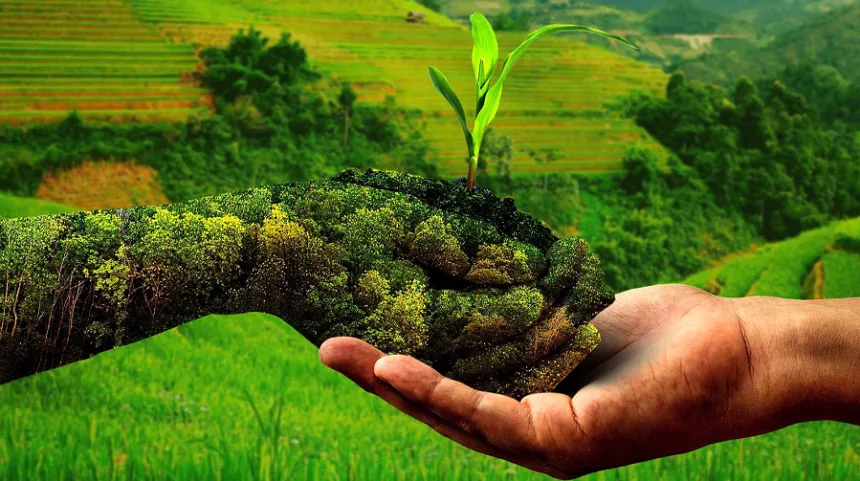Kashmir is known for its stunning beauty—snow-capped mountains, lush green valleys, and peaceful lakes. It’s one of India’s most ecologically rich and delicate regions. But over the years, rapid urban growth, deforestation, and the growing impact of climate change have started to take a toll on its natural environment. In response, a hopeful vision called “Green Kashmir” has started taking shape. It’s all about finding a balance between development and protecting the land that has always been Kashmir’s soul.
In the last ten years, development in Kashmir has picked up pace. But this time, there’s a stronger focus on sustainability. Government departments and local groups have come together for massive tree plantation campaigns to restore green cover. Trees like Kail, Deodar, and Willow—native to the region—are being planted in forest areas that were once degraded. These efforts not only help stop soil erosion but also absorb carbon, making the air cleaner.
Tourism in Kashmir is also getting an eco-friendly twist. Instead of building huge resorts or crowding delicate landscapes, there’s now more encouragement for nature-based tourism. Think trekking through pristine trails, bird-watching in quiet forests, or staying in villages where travelers can experience local culture and food. These types of travel benefit both the environment and local people.
Farmers too are becoming part of this change. They’re being trained in organic farming, composting, and water-saving methods like drip irrigation. High-altitude farming—especially apples and walnuts—is getting support through climate-smart techniques, helping farmers adapt to changing weather. The government, along with Non-Governmental Organization and national agencies, has taken several steps to bring the Green Kashmir idea to life. One such initiative is “Har Gaon Hariyali,” which aims to plant millions of trees in rural areas, especially on common village lands. The idea is to boost biodiversity and bring more stability to local ecosystems.
In the cities, things are changing too. Under the Smart City Mission, electric buses and charging stations are being introduced to reduce air pollution. In Srinagar and nearby towns, electric mobility is already up and running. At the same time, efforts like Mission Life are encouraging young people and students to be more environment-conscious—use less plastic, save water, and eat in ways that are healthy and eco-friendly. One of the most important parts of this green push is reviving Kashmir’s famous lakes, especially Wular and Manasbal.
Wular Lake, one of the largest freshwater lakes in Asia, has always played a key role in Kashmir’s ecosystem. It helps with flood control, water filtration, and is home to countless species of birds, fish, and plants. But over time, pollution, illegal construction, and silt buildup have shrunk its size and hurt its health. To fix this, the Wular Conservation and Management Authority was formed. They’re now removing tons of silt and cutting down encroaching willow trees to bring back the lake’s natural size. They’re also planting trees around it to stop more silt from entering and protecting bird habitats to promote eco-tourism.
Manasbal Lake, in Ganderbal district, is another gem. Known for its clear waters and quiet charm, it’s become a favorite for tourists. But to keep it that way, serious work is being done—cleaning its banks, stopping sewage from flowing in, and connecting nearby homes to treatment plants. People living around the lake are being encouraged to use organic farming and adopt cleaner fish-farming practices. Restoring Manasbal is not just about protecting a beautiful lake—it’s about preserving local livelihoods and Kashmir’s identity as a clean, green tourist destination.
At its core, the “Green Kashmir” movement is about a shared promise—to protect nature while building a better future. From planting trees and saving lakes to promoting clean energy and mindful tourism, there’s real change happening on the ground. Still, challenges lie ahead. The dream of a truly green Kashmir will only come true if we keep investing wisely, plan with care, and most importantly, involve the people of Kashmir in every step of the journey.


